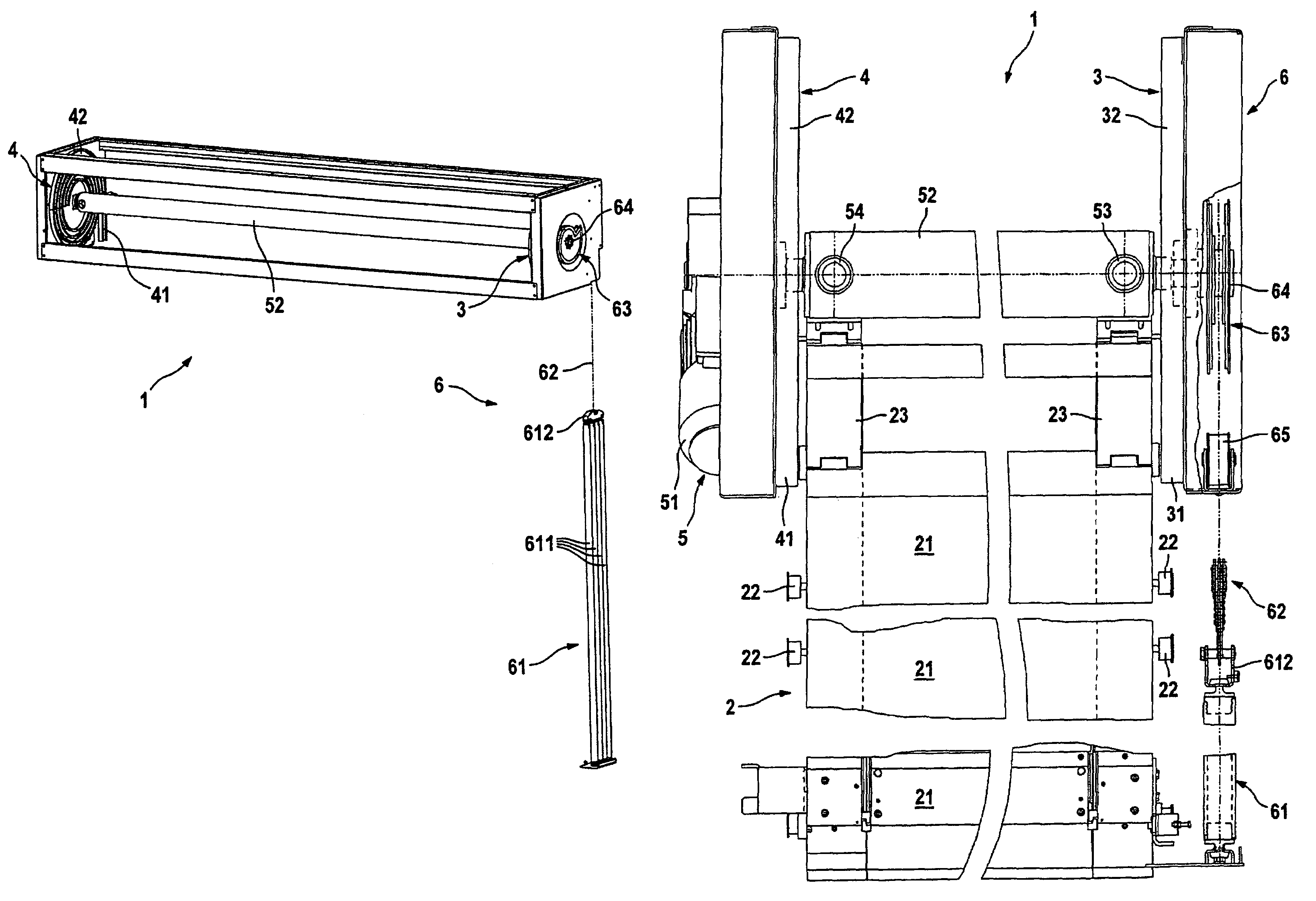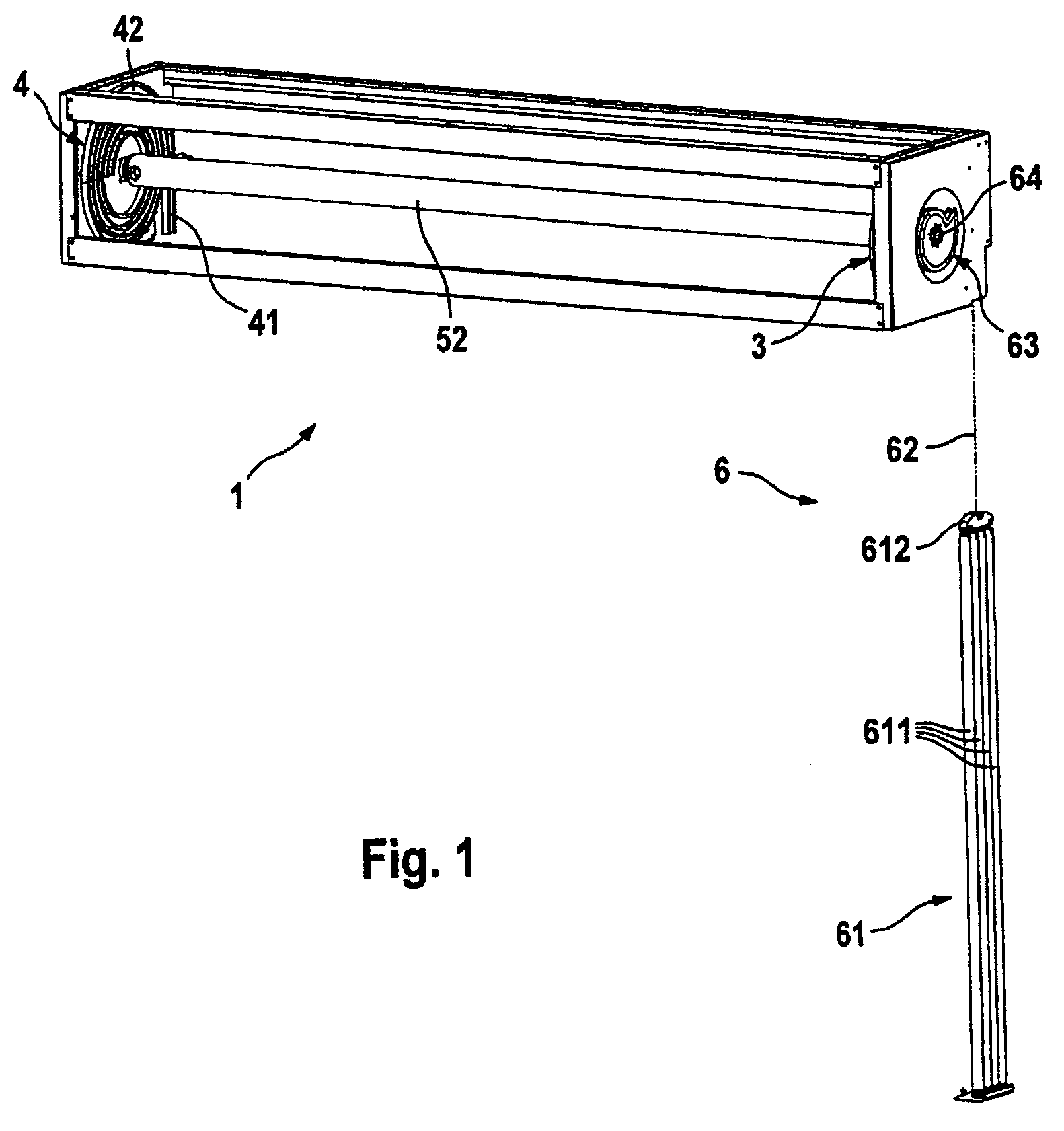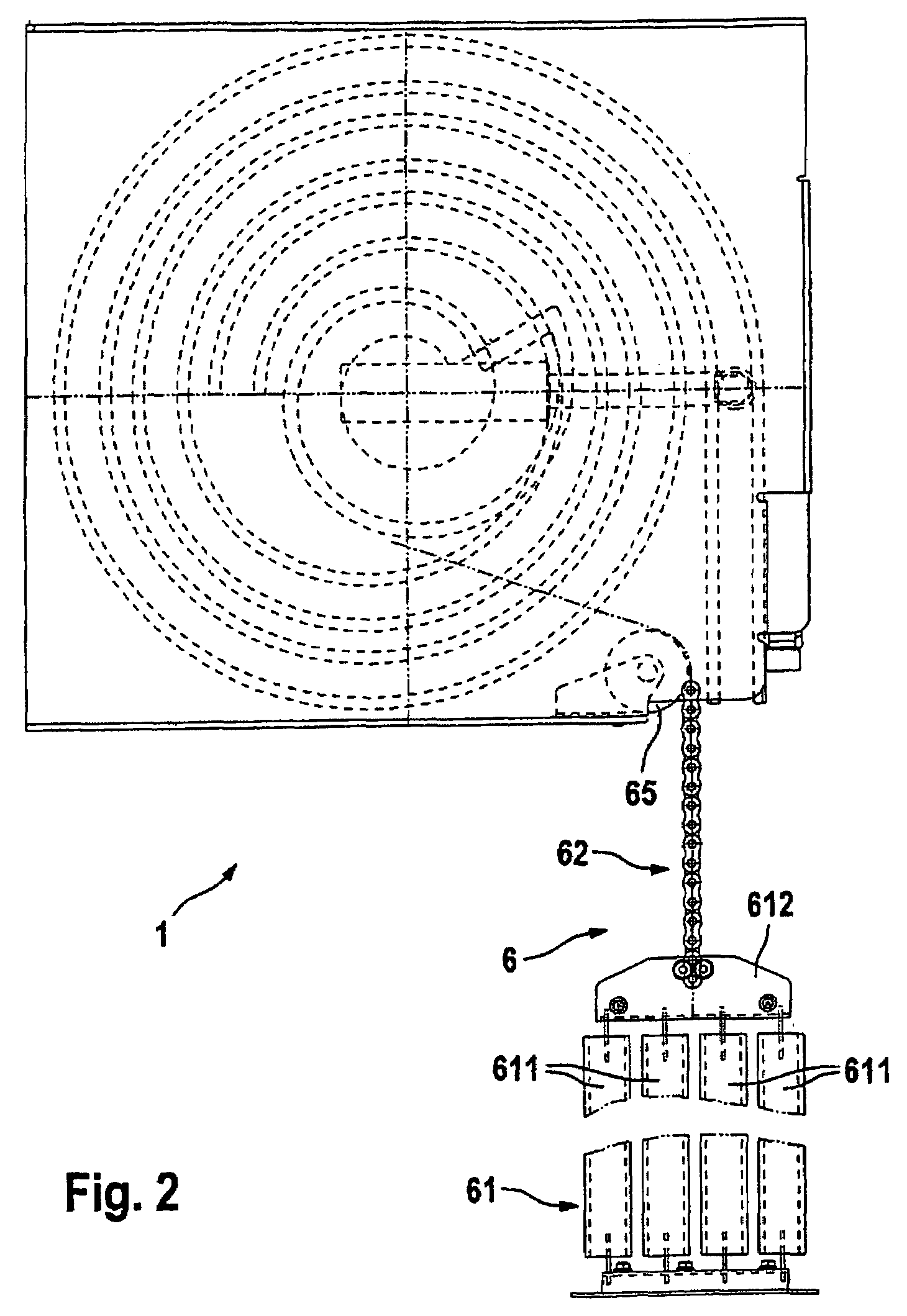Weight compensation device for a lifting door
a technology for lifting doors and weight compensation, which is applied in door/window protective devices, wing accessories, shutters/movable grilles, etc., can solve the problems of increased wear of torsion springs, limited service life, and considerable dynamic tension peaks of torsion springs, etc., and achieves long service life and small number of components. , the effect of unsusceptible to wear
- Summary
- Abstract
- Description
- Claims
- Application Information
AI Technical Summary
Benefits of technology
Problems solved by technology
Method used
Image
Examples
Embodiment Construction
[0036]According to the illustrations in FIGS. 1 to 3, a lifting door 1 which is embodied as a roller door has a door leaf 2 which has lamellas 21 which are coupled to one another in an articulated manner and which are guided in lateral guides 3 and 4 by means of rollers 22. The rollers 22 are mounted here on lateral hinge belts 23 which pick up the tensile loads and thrust loads on the door leaf 2 and hold the lamellas 21.
[0037]The guides 3 and 4 each have a vertical section 31 and 41, respectively, whose upper end can be seen in particular in FIG. 2 and which extends in a conventional way from the lintel-side end which is shown as far as the floor-side end of the lifting door 1, but this, along with the frames, is not shown in more detail in the figures. At the lintel side, the vertical sections 31 and 41 each open into a spiral section 32 and 42, respectively, which is in the form of a round spiral and in which the door leaf 2 is accommodated in the open position of the lifting do...
PUM
 Login to View More
Login to View More Abstract
Description
Claims
Application Information
 Login to View More
Login to View More - R&D
- Intellectual Property
- Life Sciences
- Materials
- Tech Scout
- Unparalleled Data Quality
- Higher Quality Content
- 60% Fewer Hallucinations
Browse by: Latest US Patents, China's latest patents, Technical Efficacy Thesaurus, Application Domain, Technology Topic, Popular Technical Reports.
© 2025 PatSnap. All rights reserved.Legal|Privacy policy|Modern Slavery Act Transparency Statement|Sitemap|About US| Contact US: help@patsnap.com



